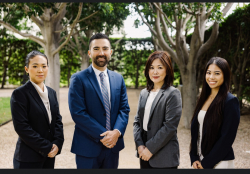Info Type
View Option
Sort by Month
Sort by Category
Back
This text has been translated by auto-translation. There may be a slight difference between the original text and the translation. (Original Language: 日本語)
2022/3/14 - 2022/9/24 / 千葉県 佐倉市 / Other

| Venue | National Museum of Japanese History, General Exhibition, Room 4, Special Exhibition Room |
|---|---|
| Address | 285-8502 千葉県 佐倉市 城内町117 |
| Date | 2022/3/14 - 2022/9/24 |
| Time | 9:30 minute(s) - 17:00 minute(s) |
- [Time detail]
・ Admission until 30 minutes before closing.
・ Closed : Mondays ( If Monday is a holiday, the museum will be open and closed the following day *Open on May 2 ( Mon ), August 15 ( Mon ) ), June 7 ( Tue ), August 2 ( Tue ) , September 13 ( Tue ).
- [Getting here]
Train : Approx. 15 min. walk or 5 min. by bus from Keisei Sakura Sta. on the Keisei Main Line, or approx. 15 min. by bus from Sakura Sta. on the JR Sobu Main Line.
Car : Approximately 15 minutes from Yotsukaido IC or Sakura IC on Higashi-Kanto Expressway.
- [Venue detail]
National Museum of Japanese History 117 Jonouchi-cho, Sakura-shi, Chiba
Room4 Special Exhibit "Living with the Deceased - Mortuary Tiles ・ Buddhist Altars ・ History and Folklore of Memorial Services on Hand -"
- [Contact]
- 050-5541-8600 ( Hello Dial )
- [Registrant]国立歴史民俗博物館
- [Language]日本語
- Posted : 2022/04/08
- Published : 2022/04/08
- Changed : 2022/04/08
- Total View : 457 persons
- Find local business with Town Guide
-
- Initial cost 0 yen ! Move-in from other ...

-
We are looking for visitors to view the home. Physical disabilities, please feel free to contact us.
+81-436-26-6852グループホーム ぐらっど姉崎
-
- If you want to sell your car, go to Bubk...

-
We are a car buying specialist with locations in Torrance and Costa Mesa. Our greatest strength is our ability to purchase cars at high prices by thoroughly reducing costs. If you want to know the val...
+1 (424) 271-0838Bubka!
-
- We offer ramen ranging from light and ri...

-
Pork bone ramen cooked for 12 hours to extract just the right amount of flavor from the meat and bones, rich soy sauce ramen cooked with more chicken stock, garlic pork bone ramen with more back fat...
+1 (626) 587-0034Ramen Boiler Room
-
- We handle residential and commercial bro...

-
We provide relocation life start-up services, rental properties, investment properties, and brokerage of real estate sales and purchases with home to home, people to people, and hospitality. Our exper...
+1 (925) 381-6572H2H GLOBAL JAPAN, LLC
-
- We will responsibly repair, inspect, and...

-
Are you looking for a place where you can trust your precious car? At M's Factory, Seisei Matsuoka, a mechanic with more than 30 years of experience who loves cars more than three meals a day, will re...
+1 (310) 533-4897M's Factory
-
- We are a salon offering total support wi...

-
We are a salon offering total support with the theme of "Health, Beauty and Healing" in Cain's Home Store in Aoki, Futtsu City. We offer reasonable body care & facial esthetics. Customized menus are a...
+81-439-87-2131トータルリラクゼーションAju
-
- Free seminar in LA ! Feel free to contac...

-
Living Benefit," a life insurance policy that is absolutely recommended for living in the U.S., "Compound Interest," which earns interest on interest, and many other useful information ! Why not live...
+1 (702) 480-1839Kayo Clawson / Financial Professional
-
- GIIP is an accounting firm that provides...

-
A bridge between the U.S. and Japan for international taxation and international business, GIIP is an accounting firm providing U.S. related solutions for Japanese clients. From corporate incorporatio...
+1 (212) 518-7065GIIP 日米国際会計事務所
-
- Dallas ・ Japanese Restaurant ! Masami of...

-
Owner & The owner ! and other veteran Japanese chefs serve Japanese cuisine
Reasonably priced and casual 😊 Sushi for lunch ・ Sashimi set menus and grilled fish set menus such as mackerel and sa... +1 (469) 670-2224Masami Japanese Sushi & Cuisine
-
- We can help you with new construction, a...

-
Design ・ Construction ( New Construction ・ Remodeling ・ Extension ・ Interior Construction ) General, Commercial ( Shopping Centers, Restaurants, Other Stores ) Restaurants Design ・ Construction ・ Cons...
+1 (808) 383-7782Dream Constructions, Inc.
-
- We offer the highest quality seafood and...

-
From Japan and around the world. Main tuna toro, red meat, hamachi and salmon. Yama Seafood's fish is also used in starred restaurants. Delicious home cooking with delicious fish !.
+1 (201) 433-3888YAMA SEAFOOD
-
- タイ・バンコクの現地オプショナルツアー予約サイト|おすすめの現地ツアー・世界遺産...

-
市内寺院観光や世界遺産アユタヤ観光などのオプショナルツアーはもちろんのこと、国内のビーチリゾートホテルや隣国カンボジアのパッケージツアーなど様々なご要望にお応えしております。 オフィスはバンコクの中心地チットロムにありますので、お食事やショッピングの合間にぜひお立ち寄り下さい。
+66 (02) 656-0026Panda Travel Agency, Ltd.
-
- House cleaning ・ Remodeling ・ If you nee...

-
House Cleaning ・ Remodeling ・ Leave it to Pikanetto for handyman ! We mainly operate in Chiba City, Ichihara City, Sodegaura City, Kisarazu City, Kimitsu City and Futtsu City in Chiba Prefecture. To...
(0438) 63-8394ぴかねっと
-
- Traffic Accident, Corporate ・ Business T...

-
We offer a wide range of services including accidental injuries, corporate law, contract drafting and business troubleshooting, estate planning ), divorce, Notary ( of Japanese documents ) and notariz...
+1 (949) 293-4939Kimura London & White LLP
-
- We are committed to your safety and most...

-
Famous for its hills and fog, San Francisco is one of the world's most famous tourist destinations, with the Rundgate Bridge, Bay Bridge, Fishman's Wharf -, and Alcatraz Island. The night view from ...
+1 (415) 722-0428Meow Group San Francisco Optional Tour Specialist








Traditionally, much attention has been paid to the origins of butsudan altars, and research has been conducted on the subject. However, there are still many aspects, including regional diversity, that are not fully understood, such as how Buddhist tablets and other Buddhist altars, which are an integral part of altar rituals, have been enshrined. Furthermore, in recent years, the declining birthrate, aging population, and changing views of the family have brought about major changes such as the closing of Buddhist altars and the emergence of handmade memorial offerings.
This exhibition focuses on various ritual objects such as butsudan (Buddhist altars), Buddhist tablets, and Buddhist ritual utensils, and examines the development of butsudan rituals, their regional diversity, and contemporary changes, as well as the various histories and folk customs of rituals for the dead held in the home.
[Admission]
Adults 600 yen, college students 250 yen, high school students and younger free
*The general exhibition is also available.
*People with disabilities may enter the museum free of charge with a caregiver upon presentation of a disability certificate.
*High school and university students must show their student ID.
*Please show your museum ticket stub to enter the Botanical Garden of Life on the same day.
Show the stub from the Botanical Garden and get a discount for the Museum admission on the same day.